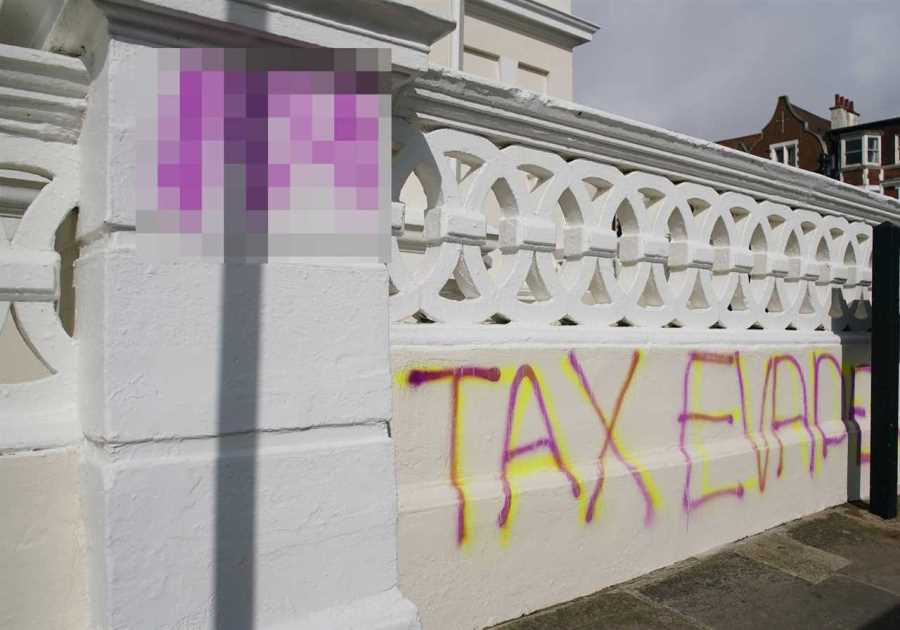
Issues with Ethereum congestion and high fees have led to many companies adopting layer-one solutions like Optimistic Rollups, OMG Network and many others. These platforms allow transactions to be created outside of the Ethereum network on what are known as “sidechains,” which then can be reconciled on the main Ethereum network in one simple transaction.
These layer-two options are gaining a lot of traction in anticipation of the release of Ethereum 2.0, which aims to solve the current high gas fees through sharding and splitting transactions throughout multiple blockchains.
Many projects have been adopting both layer-one and layer-two solutions to give users alternatives to the current demanding fees seen on the Ethereum blockchain. Among these projects, decentralized exchanges like SushiSwap and 1inch stand out. Sergej Kunz, co-founder of 1inch Network, told Cointelegraph: “We are ready to expand to any other blockchain with enough DEXes, tokens and users. No matter if it is a separate blockchain like BSC, NEAR, TRON, Solana or it is an L2 solution like Optimism or zkSync.”
Binance Smart Chain: Complimenting while competing
In the meantime, layer-one projects like Binance Smart Chain, or BSC, give users cheaper and faster trading and liquidity provision options. BSC is one of the most popular alternatives to Ethereum, due to all of the advancements already made by Binance. Zhenwu Shi, founder of InfStones — one of the top 10 validators on the BSC network — told Cointelegraph:
“Making a transaction on BSC only takes $0.1 and is confirmed within 5 seconds, while it takes $20 and a few minutes on Ethereum. Such excellent performance has attracted a lot of developers to migrate their projects to BSC. Moreover, Binance is dedicating a significant amount of engineering resources on developing BSC, and the technology progress of BSC is much faster than other projects.”
While BSC can be seen as Ethereum’s current number-one competitor, there are other ways of looking at the present scenario. BSC provides an alternative for projects and users that frees up space on the Ethereum chain and allows for cheaper gas prices on this currently overburdened blockchain. Some, however, have slammed BSC for being centralized, so there are many factors to consider when thinking about efficiency and decentralization.
Many believe that the future of blockchain and smart contract platforms will be distributed once there is no single project that will hold total domain over the market. Multiple projects will have different advantages and features to offer users. Sometimes, even branding can make projects stand out from each other. As so, it’s unlikely that Ethereum will remain the dominant decentralized finance powerhouse it has been so far. Ilya Abugov, an advisor to a DeFi data platform DappRadar, told Cointelegraph:
“ETH 2.0 is significantly far away that competing blockchains can establish their own ecosystems. When ETH 2.0 launches, it will likely be just one of the options for project teams. It should improve things for the Ethereum ecosystem, but it will not take things back to Ethereum as the only viable option.”
A community-driven project, Cardano
Many other projects offer different approaches to smart contract and DeFi technology that may compete with and complement the current paradigm that has so far been dominated by Ethereum, which has achieved a strong network effect. Alongside BSC, Cardano is often viewed as one of the leading contenders to Ethereum.
The Cardano community has a passion, and the community has seen rapid expansion. Love him or hate him, Charles Hoskinson can move a crowd. Cardano was built from the ground up with the backing of academic research. Many in the blockchain industry consider Cardano to be one of the best-designed blockchains in the crypto space. The industry heavily criticized Cardano for its initial slow development. However, as the system becomes operational, the thought, planning and engineering may allow for rapid acceleration and adoption.
Cardano is one of the pioneers in an emerging contract model, extended UTXO. Extended UTXO builds on the “box” transaction framework that was brought to market by Bitcoin. However, UTXO boxes gain custom logic and programmability. Rather than the contract model, which gained adoption starting with Ethereum, the extended UTXO has a unique property by which the majority of the contract logic does not run on the blockchain itself. The extended UTXO model prevents the chain bloat that account-model smart contracts accumulate.
The extended UTXO model is relatively new. However, many researchers believe it is equivalent to moving from 8 bit to 64 bit. Some had speculated that Cardano’s real challenge to compete with BSC and Ethereum might as well be the path to mass developer adoption of this new model, as it is relatively new. The Plutus testnet certainly puts these fears to rest, as there have been overwhelming interest and signups before its launch.
The extended UTXO alliance in Ergo
Ergo is a project that lacks the hype-driven marketing that tends to be so prevalent in the crypto space. Perhaps this is because its research-first approach and high-level content produce a lot of confusion for the average crypto investor.
Ergo is a proof-of-work, or PoW, smart contract blockchain, and was the first blockchain to introduce the extended UTXO smart contract model. This led to a strategic research partnership with Emurgo and IOG, the two primary companies building Cardano. Joint research has created oracle pools, a radical new approach to broadcasting read-only oracle data in the blockchain space.
NIPoPoW’s, or non-interactive proofs of proof-of-work, allow full PoW node security on ultra-light client environments, mainly cell phones. The founder and core developer of the Ergo platform, Alexander “Kushti” Chepurnoy, told Cointelegraph:
“Ergo is acting in a Bitcoin-like UTXO model, which is far more friendly to known scalability and privacy solutions than Ethereum and other account based block chains. Ergo has native tokens, not contract based, which is cheaper. Also, it is enforcing developers to do computations off-chain, with just necessary checks and minimal storage to be on-chain, achieving rollups level of blockchain bloat compression.”
The path to PoW full node security on mobile devices and potentially wearables is undoubtedly an exciting development. Joint research has also built the framework for an extended UTXO algorithmic stablecoin protocol, AgeUSD. The AgeUSD protocol can be customized to be a derivative representing any asset or commodity with relative ease.
While Ergo is not a native privacy coin, it already has one of the most advanced layer-two privacy applications on the blockchain: a noninteractive mixer. Ergo was launched with Schnorr signatures called sigma protocols.
The Ergo/Cardano alliance certainly is something that can drive further development. After completing the Goguen rollout, joint sidechain research may plug these two chains together, creating an extended UTXO network, bringing together the strengths of both PoW and proof-of-stake blockchains.
Waves is a blockchain protocol that seeks to create a larger ecosystem of interconnected blockchains. Solving this fragmentation and interconnection, the blockchains' cumulative functionality is one of Waves’ critical points of focus. Rather than squeeze everything into one chain, the solution lies in interchain interaction that is genuinely blockchain agnostic, without a new native token, but with its tokenomics based on participating chains’ respective economies.
When asked about the advantages being brought to DeFi by Waves as a layer-one protocol, the head of growth at Waves, Max Pertsovskiy, told Cointelegraph that since the smart contract scripts are not Turing complete, it is easy to predict their complexity, and as such, “A blockchain transaction fee doesn't depend upon what script is used and is fixed at 0.005 WAVES, or $0.05 at the current exchange rate.” He added further:
“Another factor is staking, which, thanks to the Waves protocol's underlying LPoS consensus algorithm, facilitates locking WAVES coins at 6% annually and, based on that, building attractive DeFi mechanics, as the Neutrino team has done.”
The blockchain space is famous for its tribalism — one chain to rule them all. The Waves protocol is working to develop gateways that remove borders to interconnect the blockchains. Waves would allow each blockchain to potentially hyper-specialize while evolving together as a whole. However, it is debatable whether the different tribes will unite and form a society.
Is DeFi adoption here to stay?
It is hard to say with any level of certainty what the future of DeFi will look like. The current DeFi environment has many notable projects all building toward a common goal. The race might be decided by technology, or perhaps community adoption, or maybe use will be the deciding factor.
It’s worth noting that, much like traditional finance, the world of DeFi may have room for many competing and collaborative solutions. For example, Polkadot believes this to be the case and focuses heavily on building interoperability solutions.
One thing is clear: The increasing level of research, innovation and adoption certainly shows that the DeFi movement is only going to grow. Michael Gord, managing director at the XDB Foundation — a nonprofit organization focused on supporting DigitalBits and related technologies — told Cointelegraph:
“Over the past year, the industry has more than proven its ability to hyperconnect all manners of network participants, and now, there are more places than ever to build. We are witnessing the rise of protocol layer blockchains, such as Polkadot, Cardano, Stellar and DigitalBits.”
Gord believes that the future of DeFi is not about one chain or the other but about a cross-chain one. Though difficult, “Cross-chain solutions are absolutely imperative to keeping DeFi truly open.”
Title: Life beyond Ethereum: What layer-one blockchains are bringing to DeFi
Sourced From: cointelegraph.com/news/life-beyond-ethereum-what-layer-one-blockchains-are-bringing-to-defi
Published Date: Wed, 14 Apr 2021 16:55:31 +0100






